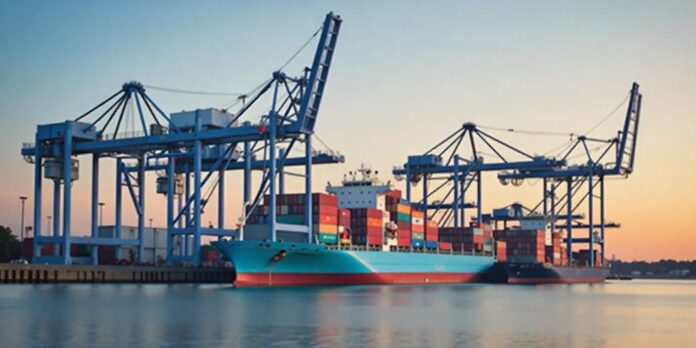Trade policies can often feel like navigating a maze. One of the more intriguing elements in this realm is the concept of Voluntary Export Restraints (VERs). Imagine a scenario where exporting countries willingly agree to limit their exports to another nation. It might sound counterintuitive, but these agreements play a significant role in international trade dynamics.
As global markets evolve, understanding the economic impact of VERs becomes crucial for businesses and governments alike. From historical examples that shaped industries to contemporary debates about fairness and competitiveness, VERs have left an indelible mark on how we view trade relationships. Join us as we unravel the complex layers behind voluntary export restraints and explore their far-reaching implications on both importing and exporting nations.
Understanding Voluntary Export Restraints (VERs)
Voluntary Export Restraints (VERs) are trade agreements where exporting countries limit the quantity of goods they send to a particular market. Unlike tariffs or quotas imposed by importing nations, VERs emerge from negotiations between both parties.
These arrangements often arise in response to pressures from importing countries aiming to protect local industries. By agreeing to restrict exports, sender nations can avoid more severe trade barriers that might otherwise be enacted.
VERs typically involve key sectors like textiles, automobiles, and agricultural products. They help maintain favorable relationships between trading partners while addressing concerns about market saturation or unfair competition.
While voluntary in nature, these restraints can create complex dynamics in global markets. Their impact ripples through economies as stakeholders navigate the balance between supply and demand amid constrained access. Understanding this intricate framework is essential for grasping broader economic trends tied to international commerce.
History and Examples of VERs
Voluntary Export Restraints (VERs) have a rich history that dates back to the 1980s. They emerged as a response to increasing trade tensions between countries. The most notable early example was in the automobile industry, particularly between Japan and the United States.
In 1981, Japan agreed to limit its car exports to the U.
S., aiming to reduce friction and protect American manufacturers. This arrangement showcased how VERs could be used diplomatically.
Another significant instance occurred in textiles during the same decade. Countries like China entered into voluntary agreements with Western nations, controlling their textile exports while allowing for market stability.
These historical examples illustrate how VERs serve as a tool for managing international trade dynamics without resorting to outright bans or tariffs. Each case reflects attempts at compromise amid complex economic landscapes.
The Intention Behind VERs
The primary intention behind Voluntary Export Restraints (VERs) is to protect domestic industries in importing countries. By limiting the quantity of goods that can be exported, these measures aim to stabilize local markets and prevent oversaturation.
Governments often implement VERs as a response to rising imports that threaten local jobs and businesses. This strategic decision seeks to balance trade while allowing foreign competitors some access without overwhelming domestic players.
Another motivation for VERs stems from international negotiations. Countries may use them as bargaining chips during trade discussions, signaling their willingness to compromise on import levels while still safeguarding their own economic interests.
Additionally, these restraints can foster better relationships between trading nations by avoiding outright tariffs or quotas. By voluntarily agreeing to limit exports, exporting nations show goodwill even amid competitive pressures in global markets.
Positive Effects of VERs on Importing Countries
Voluntary Export Restraints (VERs) can have surprising benefits for importing countries. One notable advantage is the protection of local industries. By limiting foreign competition, domestic businesses often find a more favorable environment to thrive.
This protective measure can lead to job creation within these local sectors. When consumers buy products from homegrown companies, it supports employment and stimulates economic growth.
Moreover, VERs allow governments to negotiate better trade terms. With controlled imports, countries may leverage their position in discussions with exporting nations for more favorable agreements.
Consumers might also experience enhanced product quality due to reduced competition pressures on local producers. With less focus on price wars, firms prioritize innovation and customer satisfaction.
VERs encourage diversification of supply chains as importers seek alternative sources or develop new partnerships outside restrained markets. This shift helps mitigate risks associated with dependency on specific exporters.
Negative Effects of VERs on Exporting Countries
Voluntary Export Restraints (VERs) can have significant downsides for exporting countries. When a nation agrees to limit its exports, it often sacrifices potential revenue. This loss can stifle economic growth and hinder investment opportunities.
Producers in the exporting country may face reduced market access, forcing them to adjust their pricing strategies. Higher prices can lead to decreased competitiveness in the global market. As demand declines due to these price hikes, companies might struggle financially.
Furthermore, VERs can create an atmosphere of uncertainty. Businesses become wary of relying on steady export volumes when future quotas are unpredictable. This unpredictability can deter foreign investments and impact long-term planning.
In some cases, industries that rely heavily on exports may experience job losses as production slows down or relocates elsewhere in search of better opportunities.
Criticisms and Controversies Surrounding VERs
Voluntary Export Restraints (VERs) are often met with skepticism. Critics argue that they distort market dynamics. By limiting supply, VERs can lead to inflated prices for consumers.
Moreover, these measures may hinder global competition. Instead of encouraging domestic industries to innovate and improve efficiency, companies might rely on the protectionist nature of VERs. This stagnation can ultimately harm both economies in the long run.
Another point of contention is their temporary nature. While intended as short-term solutions, many VERs linger longer than anticipated. This can create an environment where businesses expect ongoing protections.
Additionally, there’s a risk that exporting countries may retaliate through other trade barriers or tariffs. Such actions could escalate into broader trade disputes, impacting relationships between nations and creating further economic uncertainty in international markets.
Alternatives to VERs for Managing Trade Imbalances
Countries facing trade imbalances have several alternatives to Voluntary Export Restraints (VERs). One effective method is implementing tariffs. These taxes on imported goods can help protect domestic industries while encouraging local production.
Another approach is engaging in bilateral or multilateral trade agreements. Such partnerships foster cooperation and create mutually beneficial terms, often boosting exports without resorting to restrictive measures.
Additionally, governments can invest in innovation and productivity enhancements for local businesses. By supporting research and development, they empower industries to become competitive on a global scale.
Subsidies are also an option. Offering financial assistance to targeted sectors can enhance their ability to compete internationally, reducing reliance on imports.
Currency manipulation might come into play. A weaker currency makes exports cheaper and imports more expensive, potentially correcting trade deficits effectively but with significant ethical considerations.
Conclusion: Examining the Overall Impact of VOLUNTARY Export Restraints
The economic landscape shaped by Voluntary Export Restraints (VERs) is complex and multifaceted. These trade mechanisms can help stabilize markets, benefitting importing countries by controlling supply and prices. They create a sense of balance in international trade relationships when implemented thoughtfully.
However, the implications for exporting nations cannot be overlooked. While VERs may protect domestic industries from foreign competition, they often lead to reduced market access and potential harm to a country’s economy over time. The restrictions imposed can stifle innovation and growth within those sectors that are limited by such measures.
Debates surrounding VERs highlight their controversial nature; proponents argue for their effectiveness in achieving fairer trade practices while critics point to the unintended consequences that arise from these restraints. Alternatives do exist, offering different approaches to managing trade imbalances without restricting exports outright.
As we navigate an increasingly interconnected global economy, understanding the impact of voluntary export restraints remains crucial. Their role will continue evolving as nations seek equitable solutions in balancing domestic interests with international obligations. Examining both sides of this issue provides insights into how best to foster sustainable trade relations moving forward.











